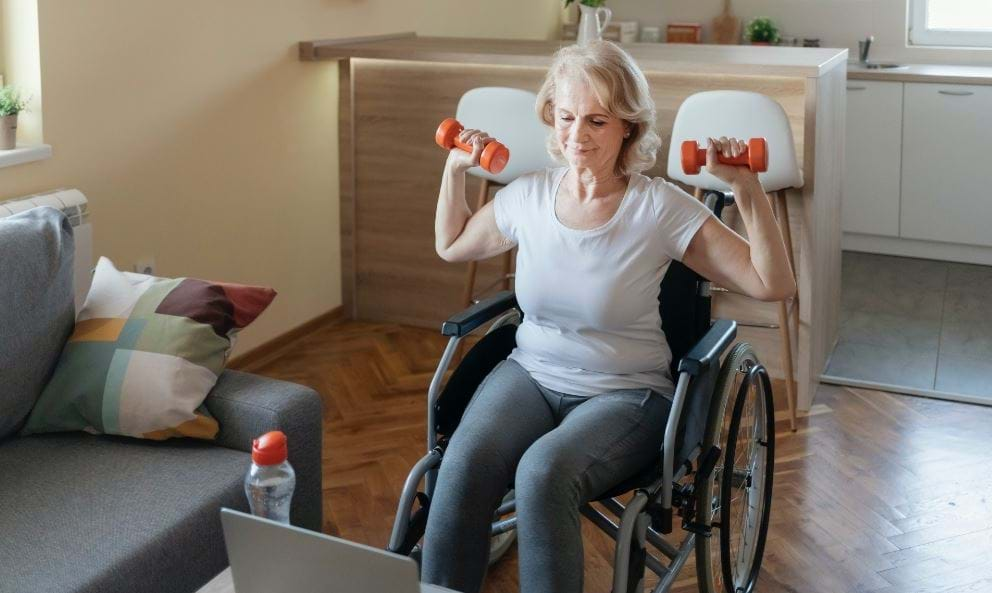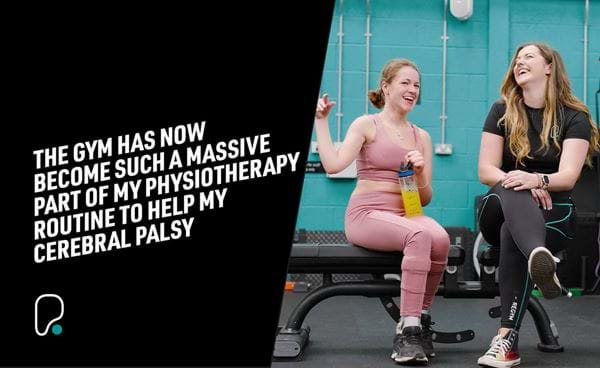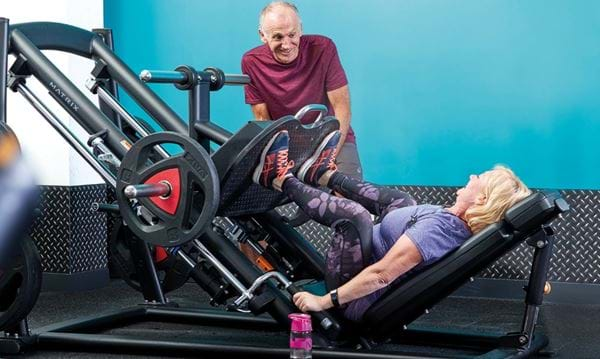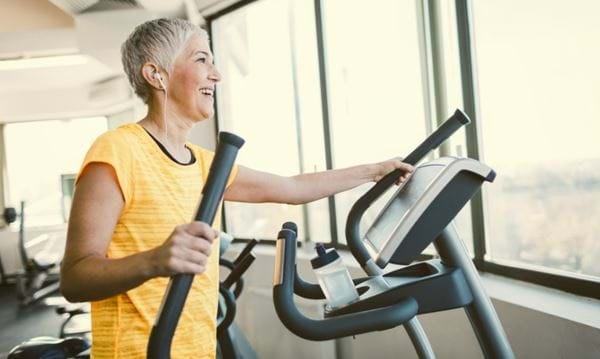Core Strengthening and Stability Exercises for Wheelchair Users

PureGym Personal Trainer and Disability Activist, Rob Ghahremani, specialises in dealing with injury and disability, and is a wheelchair user himself. We asked him for his thoughts and advice on the best core exercises for wheelchair users.
Life in a wheelchair means that every action requires a little extra thought than it does for non-wheelchair users - for example, something as simple as a trip to a restaurant means we have to consider if there is a step into the entrance or if there is a disabled toilet on-site. Exercise is no exception to this rule.
The pandemic has challenged us all to get creative when it comes to keeping fit in our homes. This is somewhat difficult to do when you have limited mobility, as the most popular and effective bodyweight exercises (such as squats, press-ups, and pull-ups) aren’t an option for many wheelchair users. It is still possible to work out, but we need to get more creative and utilise the muscles we can use.
There are several reasons why someone may require the use of a wheelchair in their day-to-day life; conditions such as spinal cord injury, spina bifida, cerebral palsy, polio, limb loss, muscular dystrophy, and multiple sclerosis are just a few of the many disabilities that may cause someone to need a wheelchair. Even within the same disability, no two people will have the exact same experience. Take two people with spinal cord injury for example. Anyone with this condition is likely unable to consciously use any muscle below their level of injury, but the level of injury may differ from person to person. This means that despite having the “same” disability, the muscles they can consciously use and engage may differ.
Despite the challenges that are presented, I hope that this blog proves useful to wheelchair users who are able to engage their core/abdominal muscles.
Benefits of core exercises for wheelchair users
Whether you have a disability or not, a strong core is the foundation to everything you do. During exercise, engaging your core helps to stabilise your spine and avoid any unnecessary stress during movement, which can help to prevent injury. On top of that, it helps you isolate the muscle groups you want to engage, leading to better exercise performance. In general, a strong core will also improve your balance and posture.
As wheelchair users, we may spend most, if not all, of the day in our wheelchairs, which can lead to poor posture and an inflexible spine. If you are able to work your core, doing so can help to combat and prevent these from occurring.
If you are new to exercising, or it’s been a while, it’s important to check with your doctor before starting a new routine. You’ll also want to gradually increase the volume of exercise over a period of a few weeks so you don’t overdo it at once.
5 Wheelchair exercises for core
These wheelchair core exercises can all be carried out from your wheelchair, either as a circuit style workout all at once, or spread out through the day.
-
Spinal Twists
These twists will help release tension in your back as well as working your core. Make sure to keep your abs engaged throughout and maintain focus on them as you move.
- Sit up straight and, keeping your lower body steady, gently twist around to the left, taking hold of the back of your chair with your right hand if you can.
- Don’t pull yourself round, but use that right hand to steady yourself and maintain the stretch.
- Hold for a few seconds breathing deeply before repeating on the right-hand side.
-
Side Bends
This movement should work the whole of the side of your waist, as well as your arms and your chest. Once you’ve mastered the movement, you can start to integrate dumbbells for an additional challenge.
Side bends can be adapted depending on how much use of your core you have. If you can use your full core, try this version:
- Sit up as tall in your chair as you can, with shoulders back and down and your arms straight down at your sides.
- Engage your core and, keeping your arm straight, swoop your left hand out to the side and upwards until it’s pointing to the ceiling with your palm facing right - your upper arm should be next to your ear.
- Keeping your arm in this position, start to bend to the right at your waist, until your body forms a “C” shape.
- While in this position, gently push your right arm towards the floor until you feel a good stretch in your left-hand side.
- Hold for a few moments before returning to the starting position and repeating on the other side.
If you only have use of the top two abs, try this adaptation:
- Sit up as tall in your chair as you can, with shoulders back and down and your arms straight down at your sides.
- Engage your core and reach down towards the bottom of your wheel as far as you can, as if you’re trying to pick something up off the floor.
- Return to a neutral position sitting tall in your chair.
- Repeat on the same side for your desired reps and then switch sides.
-
Back Extensions
Great for mobility in your spine and easing tension in your back, just make sure to keep this movement slow and controlled, focusing on your core and abs as you hinge.
- Start by sitting with your back as straight as possible, core firmly engaged, your shoulders back and down, and arms straight down at your sides.
- Hinging at the hip, while keeping your upper body in line, lean your torso as far forward as you can while still maintaining control.
- As you move, press your arms backwards so they stay in line with your torso.
- Hold for a few moments, before easing back up to starting position.
Back extensions can be adapted to suit differing abilities.
To increase the challenge, you can loop a resistance band under your feet, thighs or chair. Grip this with each hand in front of you, keeping your arms bent at 90 degrees and your elbows pressed into your body. Maintain firm tension in the band as you move.
To make the exercise easier, start by sitting down with your chest against your knees, hands on the side of your head, and elbows out. From there, engage your core and back muscles and return to an upright seated position (or as close to as possible).
-
Static Away from Body Holds
This may seem like a simple movement, but you’ll be forced to engage your core, helping to work and strengthen your abs, back, arms and shoulders. You’ll need some kind of weight, like a dumbbell or kettlebell, but could also use anything you have in your home that provides some weight to hold. You might want to start out with something light, like a pillow, and build your way up to heavier weights.
- Sit as straight as you can with shoulders back, engage your core - keep this strong position throughout.
- Holding the weight in both hands, stretch them out as far as you can in front of you.
- Hold for at least 30-60 before easing back down.
- Rest for around 20 seconds before repeating.
-
Away from Body Movements
While similar to the static holds, adding movement to this exercise will allow you to strengthen more muscles. You can mix up which movement you choose to do - we’ve highlighted two potentials below. Again, you’ll ideally need a hand weight of some kind for this.
- Start by sitting as straight as you can with your shoulder blades back and down, and your core engaged throughout.
- One option to try is a chest press motion, which you start by holding the weight in at your chest.
- Keeping the weight at the same height, slowly straighten your arms out in front of you.
- Hold for a moment before returning to the starting position.
- Alternatively, still starting with the weight held into your chest, straighten your arms as much as you can upwards above your head, before slowly leaning your arms and shoulders to one side, trying to keep the rest of your torso as steady as possible.
- Hold at the side for one moment before easing back to centre and repeating on the other side.
3 Core Exercises to Do on the Floor
If you’re able to comfortably complete movements from the ground, particularly ones where you are able to lift your back and shoulders off the floor, you can also try these core workouts from your exercise mat.
Here are three of our favourites, each of which are ideal for targeting your abs and obliques and strengthening your core and lower back:
-
Crunches
- Lie on your back on a mat. If possible, keep your knees bent and feet flat on the floor – however, legs flat on the floor is completely fine if you’re unable to.
- Cross your arms in front of your chest.
- Crunch your ab muscles to lift your shoulders off the mat just a little.
- Hold for a second, then slowly come back down to starting position.
-
Sit Ups
- Lie on the floor facing the ceiling with a slight bend in your knees if possible, arms bent at the elbows and hands lightly touching your head by the ears.
- Engage your core and lift your upper body until you are sitting upright.
- Return to the start position then lift your upper body so your left elbow touches your right knee.
- Return to the start position and repeat.
- If you’re struggling to get all the way up using just your core muscles, try reaching forward with your arms, or even swinging them gently. This generates momentum which can help you sit upright.
-
Russian Twists
You can either complete these using just your own body weight, or you can hold a single weight with both hands for an additional challenge.
- Sit on the floor or on a mat with knees bent if possible.
- Brace your abs and twist your torso to the right side.
- Move back to the starting position while breathing out.
- Then move to the opposite side by twisting your core in the other direction, before once again returning to the starting position.
How often and how much should you work your core?
The usual rule of allowing a day’s rest between working the same muscle group twice doesn’t apply to our cores, as the levels of blood supplied to our core and digestive system means this area heals and repair much more quickly than other muscle groups. So, depending on your level of fitness, theoretically, you can train your core every day. However, if you’re just starting out on your fitness journey, I’d recommend that you do 3 sets of 10 reps for each of the exercises listed above, every other day. Overtraining can often lead to injuries so be sure to listen to your body and rest when you need to!
Check out our hubs for more inspiration for core and ab workouts and other fitness tips and advice, including wheelchair friendly gym equipment. If you’re feeling inspired to join the gym, then find a PureGym near you and become a member today.


